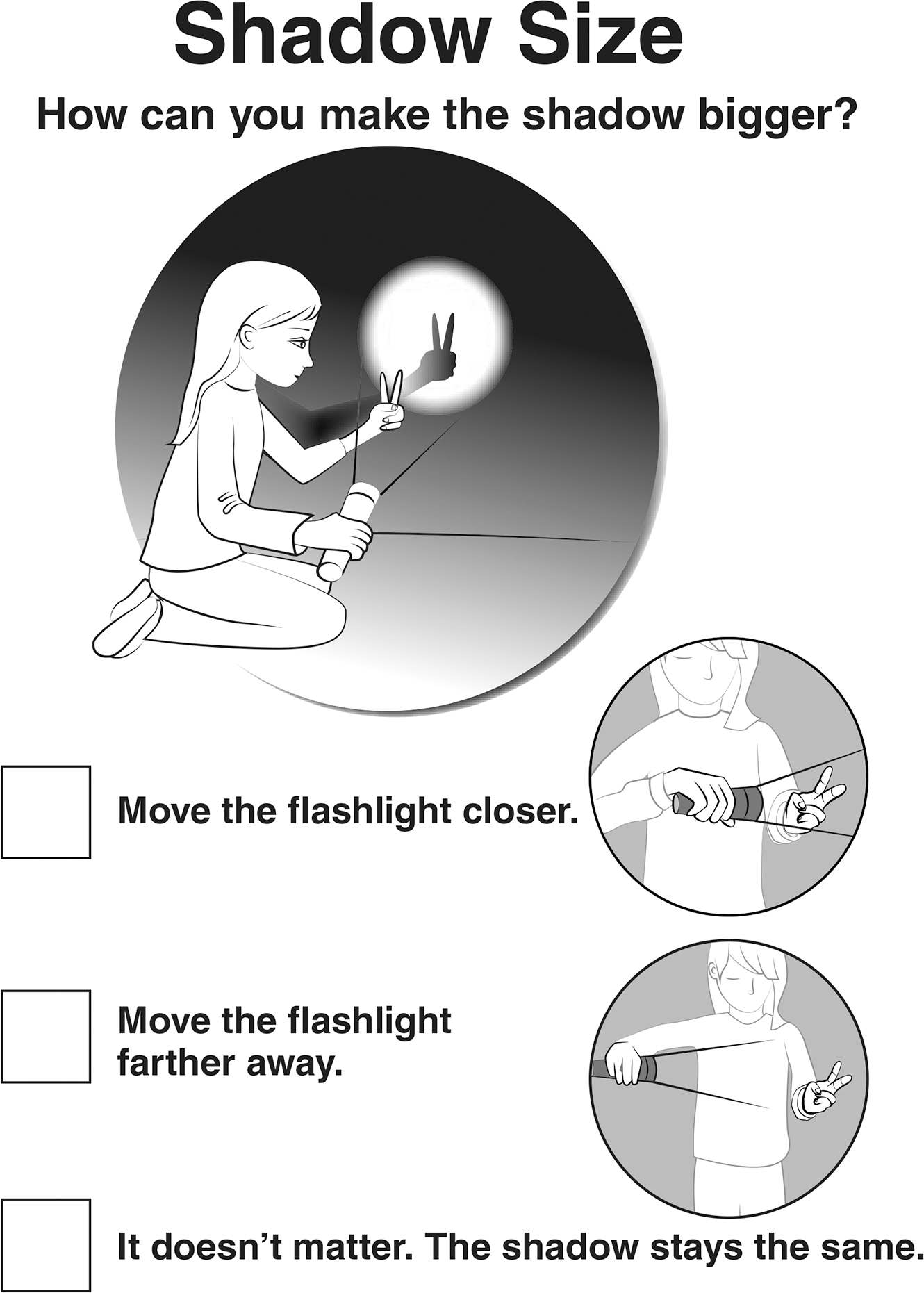Formative Assessment Probes
Uncovering Parent’s and Children’s Ideas in Science
Science and Children—April/May 2020 (Volume 57, Issue 8)
By Page Keeley
As I write this month’s column, children throughout America are “sheltered in place,” staying in their homes during the corona virus pandemic. As schools have closed, there has been an outpouring of support for partnerships between teachers, parents, and science educators as we figure out ways to work together to provide resources for and facilitate meaningful science learning at home. As teachers, parents, and students had to quickly adapt to a home online learning environment, concerns were raised about screen time. What kinds of things could parents do with their children to balance screen time for science with real experiences in the child’s physical world?
The Uncovering Student Ideas in Science probes can be an excellent resource for parents and children to be partners in learning, co-constructing ideas as they talk about and experience science together. Whether being sheltered at home during a pandemic, out of school for a long recovery after an illness or injury, or looking for after-school enrichment or summer activities, the Uncovering Student Ideas in Science probes provide a parent with a source of starting points to engage children in science talk and investigation. Furthermore, the newer books in the series (published after 2017) include Spanish versions of the probes for Spanish-speaking parents.
Support for Parents
Some parents consider science to be an intimidating and difficult subject. Faced with teaching science at home, the first step is to help parents understand that science is about making sense of our natural world, including things we experience every day. Sense-making is something children (and adults) naturally do, even before children ever start school. Children pick up information from many sources, including interactions in their environment, talking with family and friends, reading books, and watching television and movies. Children are constantly taking in new information and trying to make sense of it. Parents can build upon this desire to figure things out by using questions that make thinking visible and lead to active exploration using materials and objects found in the house or outside. At the same time, parents can learn about how children think, where their ideas come from, and why they make sense to the child.
Help the parent understand that a probe is a question specifically designed to stimulate thinking and share ideas the child may already have about a concept or phenomenon. Be sure to share the explanation in the teacher notes with the parent so that they may understand the science before using the probe with their child. Have the parent encourage the child to select an answer choice that best matches what the child thinks and together talk about the child’s ideas without being judgmental. Instead of correcting the child if he or she voices a misconception, encourage the parent to think about what the “teachable moment” could be to bridge the gap between the child’s initial ideas and the scientific explanation. Encourage and facilitate exploration with materials and ideas, and provide guidance in “figuring it out” while getting the child to talk through what they are observing and learning. Children naturally love to talk about their ideas and parents will find that these questions encourage conversation.
Make sure parents know that they should revisit the probe again after children have gained experiences they can then use to choose the best answer and construct a revised explanation. Even if they chose the best answer the first time, help the child construct a more detailed explanation using evidence from their investigation or information gained from resources such as science nonfiction books. As partners in learning, encourage the parent to co-construct the new explanation together with the child and reflect on what they both learned together.
Using the Probe
The “Shadow Size” probe is an example of a probe that can be sent home to parents to explore with their children (Figure 1; Keeley 2013).

Shadow Size probe
After the child has made a prediction and shared ideas about how to change the size of a shadow, pull out a flashlight and a few paper cutouts of simple shapes like a star, heart, or triangle affixed with tape to a pencil or craft stick. In a darkened room, let the child explore how to make the shadow larger or smaller. Does his or her observation match their prediction? Guide the child in looking for cause-and-effect relationships such as, “When I move the flashlight closer to my paper shape, the shadow _____; when I move the flashlight farther away from my paper shape, the shadow ____.” Challenge the child to make the largest shadow they can with their paper shape and then make the smallest shadow. Ask the child to explain what makes a shadow. What pattern does he or she notice? After exploration and discussion with the child, revisit the probe again, providing an opportunity to use their observations to explain how to change the size of a shadow. With newly discovered knowledge about how light interacts with objects to form shadows, create a shadow puppet show together with the child, changing the size of the characters in the puppet show.
The next time your students are faced with a situation that requires science learning at home, look through your collection of formative probes and consider providing parents with a probe or two they can use to be partners in the teaching and learning process.
To share a video with parents that provides an overview of how formative assessment probes can be used at home with elementary students, go to: http://www.youtube.com/watch?time_continue=68&v=TWgBPVjT3AM&feature=emb_logo.
Page Keeley (pagekeeley@gmail.com) is a science education consultant and the author of the Uncovering Student Ideas in Science series (http://uncoveringstudentideas.org).
Assessment Early Childhood Elementary


